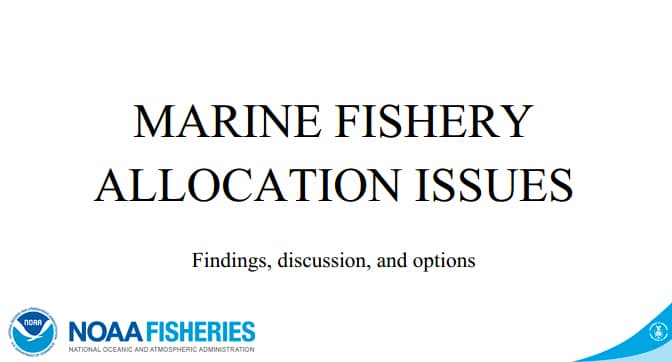
MFAI Main
The sportfishing industry has called for a re-examination of the outdated and inequitable allocations of many marine fisheries that are limiting recreational fishing participation, says the American Sportfishing Association (ASA). A reexamination could have a positive economic impact on the coastal communities that support recreational fishing/
A recent report released by the National Marine Fisheries Service (NMFS), entitled “Marine Fishery Allocation Issues: Findings, Discussion, and Options,” summarizes how saltwater fisheries have historically been apportioned between recreational and commercial fishing and provides options on how to improve the allocation process.
“Allocation has been the 800-pound gorilla in the room during fisheries management discussions. However, we’re hopeful that this new report will help spark a renewed interest in revisiting these issues,” said American Sportfishing Association (ASA) President and CEO Mike Nussman. “Many biological and socioeconomic changes have taken place in saltwater fisheries, from rebuilding fish stocks to more people fishing in saltwater. We appreciate that NMFS has started the important process of revisiting current allocations, many of which are based on decades-old criteria.”
In fisheries with both a recreational and commercial component, fisheries managers are required to allocate a percentage of the harvestable fish to each sector in a manner that is “fair and equitable,” as described in the Magnuson-Stevens Fishery Conservation and Management Act.
Many recreational anglers believe that these fixed percentages are highly subjective and favor the commercial sector. For example, despite studies that show the economic benefits of shifting a greater proportion of the Gulf of Mexico red snapper fishery to the recreational sector, approximately 300 commercial boats take 51 percent of the total harvest every year, while hundreds of thousands of recreational anglers are allocated the remaining 49 percent.
“Clearly the current piecemeal approach hasn’t worked and has left many anglers and industry members frustrated by the level of inaction,” said Nussman. “This report provides valuable insights and suggestions that NMFS and the Regional Fishery Management Councils should act upon, including the need for formalized guidance on issues to consider when making allocation decisions. This must be the next step, and NMFS must take the lead, working with Councils and stakeholders, to develop this guidance.”









